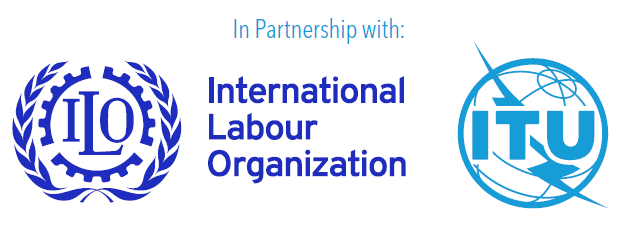3.1 Accessibility of online job application platforms / Introduction
In 2021, ILO and ITU conducted a project entitled “Accessibility of online job application and recruitment systems” with the aim of assessing the accessibility of the online job application and recruitment systems used by several United Nations entities and one non-profit organization. To that end, an accessibility audit was carried out, consisting of an in-depth evaluation of a set of pages on each organization’s website or web/desktop application with the aim of documenting the types of accessibility issues experienced and any violations of level AA compliance with WCAG 2.1, in addition to providing detailed recommendations on how to remedy the violations.
The project also included remote user testing sessions performed by users with different types of impairments with the aim of assessing the general usability of the website’s interface design, information flow and architecture, services and functionalities. Testers provided relevant user feedback data on their experiences of executing different tasks, in addition to identifying and describing any barriers, difficulties or commendable aspects encountered and the feelings and perceptions that they triggered in users. Collaboration with Spanish organization Fundación ONCE and with the United Nations High Commissioner for Refugees (UNHCR) was instrumental for recruiting testers.
Violations of WCAG detected during the project entitled “Accessibility of online job application and recruitment systems”:
| Many images lacked alternative text, thereby preventing screen readers from informing users about the information contained in the images. | |
| Headings (which provide structure to web page content by breaking information down into different ordered sections) were either missing or wrongly designated, which can confuse assistive technology users. | |
| The degree of colour contrast between some sections of text and the background was insufficient, which could make the text harder to read for some users. | |
| Some sections of instructional text on job application systems or new user forms were visually linked to form fields, but not programmatically associated with them; as a result, screen reader users miss such information. | |
| Many forms lacked mechanisms to allow screen reader users to navigate from an error message at the top of the form to the field containing the error. | |
| Some fields were marked as “Required” with a red asterisk, but screen reader users may be unaware that the field is required. Many input fields for collecting certain types of user information (such as first and last names and date of birth) lacked an autocomplete definition compatible with assistive technology, which makes it harder for people with disabilities to fill out such fields. | |
| Some pages adapted for mobile telephone use were not responsive, forcing users to scroll through the page horizontally. | |
| User menus at the top of some job search pages expanded correctly, but VoiceOver users on iOS/Safari were unable to navigate the expanded menu using gestures or touch, thereby preventing them from accessing their profile and account details. |
All the United Nations job portals assessed in the project presented significant accessibility and usability issues that pose serious barriers for – and represent a form of discrimination against – persons with disabilities who are seeking job vacancies with those organizations. Many of the most basic issues can be easily fixed as part of a short-term web accessibility strategy. However, other issues require a broader and deeper understanding of accessible web development techniques and should therefore form part of a medium- to long-term strategy. For a more detailed description of the barriers identified during the project and for recommendations for overcoming such barriers, see the executive summary of the project in Annex 3.
For the purposes of this guide, the accessibility barriers identified across all the job portals analysed during the project may provide useful orientations for United Nations agencies seeking to advance towards a more accessible Internet. It is of the utmost importance that each United Nation entity takes the initiative and invests effort into ensuring that their job portals can be used by a broader audience. Greater awareness and increased web accessibility education will also help ensure that persons with disabilities are able to use job portals.
